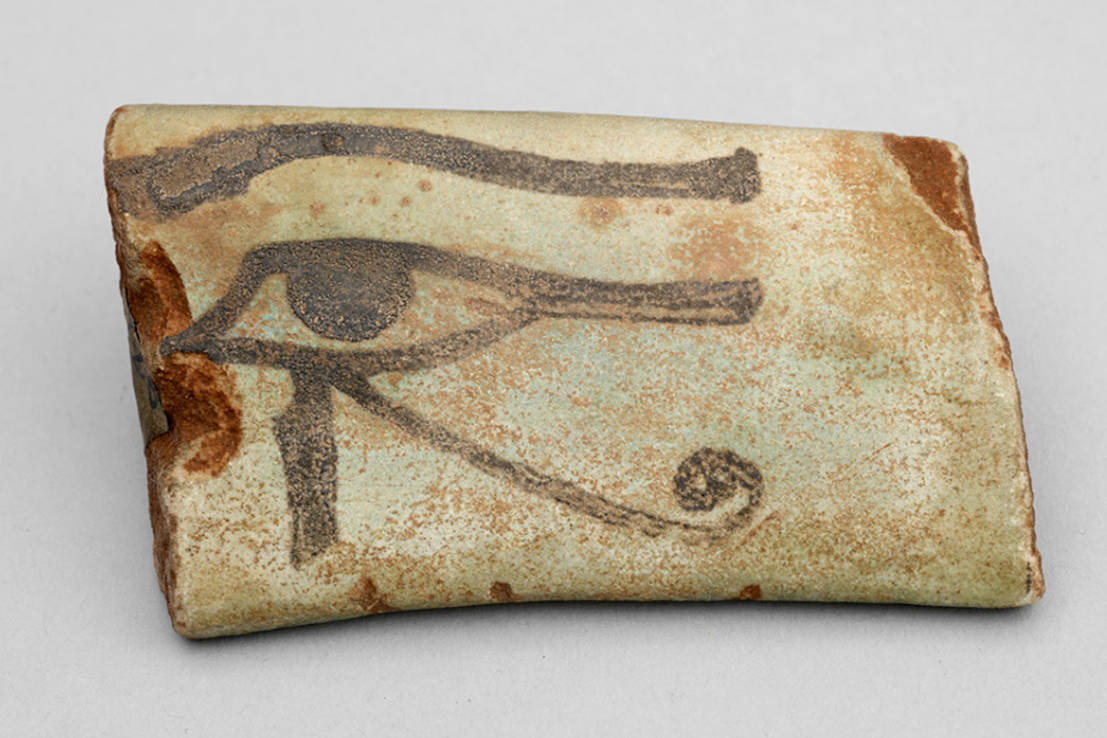
in Suomi / Finnish translated by Kirsi
This object has been translated into 12 different languages by 16 different users
Horuksen silmä oli muinaisessa Egyptissä käytössä ollut suojeluksen symboli. Se tunnetaan joskus myös nimellä wedjat-silmä. Horus oli haukkapäinen jumala, joka muinaisen egyptiläisen mytologian mukaan menetti silmänsä taistellessaan kilpailijansa Sethin kanssa. Seth oli tappanut Horuksen isän Osiriksen. Myöhemmin Thoth niminen jumala korjasi Horuksen vaurioituneen silmän, ja siitä tuli wedjat, joka tarkoittaa kokonaista tai tervettä.
Horuksen silmästä tuli suosittu suojeluksen symboli erityisesti kuolleille, ja se kuvattiin usein vainajien arkkuihin. Sitä käytettiin noin 3000 vuoden ajan, Vanhan valtakunnan ajasta aina Rooman valtakunnan aikakauteen asti. Se oli suosittu suojeluksen symboli myös muilla lähialueilla, kuten kanaanilaisten, syyrialaisten ja nubialaisten kulttuureissa.
Käytätkö sinä koruja tai esineitä tuomaan onnea tai turvaa?
Do you have something you’d like to say, in your own language or English, about the object or translation? We’d like to hear what you think.
Translations are community-sourced and for anyone to participate in, however you use your language. For more information, see Community Guidelines.
23 Sep, 2023
Italians, especially in southern Italy, are well known for their attachment to superstition. Therefore, it is not surprising that good-luck charms are particularly popular. Arguably, the most popular amulet is the “cornicello” or “cornetto” (meaning “little horn”). The amulet is believed to protect against “malocchio” (“evil eye”), and it is commonly found in the Italian regions of Campania, Lazio, Puglia, and Basilicata.
The cornetto is in the shape of a horn, and it can be made from metal, but it is most commonly red in colour. This makes them look very similar to chilli pepper, but it is meant to represent an eland horn. The cornetto finds its origin in Greek and Roman mythology as it is linked to another common symbol: the cornucopia. The cornucopia, also known as the “horn of plenty” is a symbol of abundance and it is commonly illustrated as a large horn-shaped container overflowing with fruits and flowers. Similarly, the cornetto is also associated with abundance and fertility and remains one of the most common Italian symbols of protection. If you ever go to Naples, you can be certain to see at least one cornetto be worn as jewellery, hung from the rearview mirrors of a car, or kept in a house for decor and good luck.